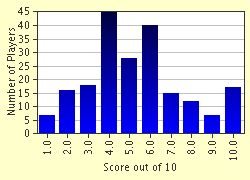Quiz Answer Key and Fun Facts
1. What kind of product was manufactured by the Union Carbide plant in Bhopal, India?
2. Which poisonous gas, which ultimately leaked and caused the Bhopal tragedy, was one of the ingredients of Sevin?
3. When did the disaster in Bhopal, India take place?
4. This was the first time that an accident had occured in a Union carbide plant manufacturing Sevin.
5. Once the Bhopal tragedy occurred, what did the Union Carbide Corporation blame it on?
6. The Bhopal gas tragedy also had several legal aspects to it, which are very interesting as well. Where was the lawsuit against UCC, claiming damages for the victims, first filed?
7. While the Bhopal case was being argued in the High Court, the Supreme Court of India, in a separate poisonous gas leak case, came up with a new doctrine which could be used in the Bhopal case as well. What was this doctrine?
8. When were the first convictions for negligence arising from the Bhopal disaster of 1984?
9. What was the amount of compensation finally awarded by the Supreme Court of India as per the settlement between the government and UCC?
10. Approximately how many people were either injured or killed in the Bhopal Gas tragedy?
Source: Author
almaster
This quiz was reviewed by FunTrivia editor
bloomsby before going online.
Any errors found in FunTrivia content are routinely corrected through our feedback system.
